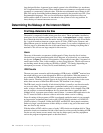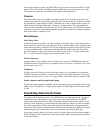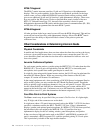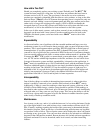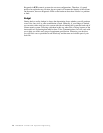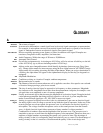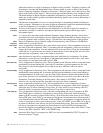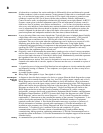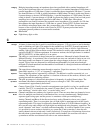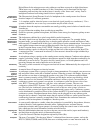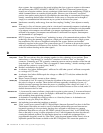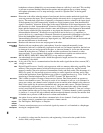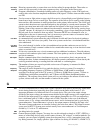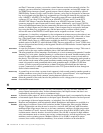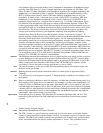
132 Handbook of Intercom Systems Engineering
Bridging
Bridging impedance means an impedance that when paralleled with a nominal impedance will
have an non-significant effect on a circuit. For example: for a nominal impedance of 600 ohms, a
parallel impedance of 3,000 ohms (5 times) would make the net impedance 500 ohms, 17 percent
less than 600 ohms or 1.6 dB. A parallel impedance of 6000 ohms (10 times) would cause about a
9 percent change or about a 0.82 dB difference. A parallel impedance of 12,000 ohms (20 times)
results in about a 3 percent change or 0.26 dB. In present day audio systems, line level and power
amplifiers have input impedances specified at 600 ohms or 15,000 ohms. Microphone
preamplifiers are usually ten times the expected source impedances. For example: for 150 ohm
microphones the input impedance is 1,500 ohms or greater. Earlier RTS™ Systems intercoms
also had this microphone input value, but a compromise value of 470 ohms was necessary
because of the crosstalk in headset cords. However, RTS™ Systems professional audio
equipment generally adheres to current audio standards.
BW
Bandwidth.
Byte
Eight binary digits or bits.
C
Call light
A feature in intercoms that is used for two different purposes: 1) To get a user to put his headset
back on (blinking call light). This method is the standard way for RTS™ Systems equipment. 2)
To generate a cue (steady call light). The usage in this case is often as follows: light on means
standby, light off after light on means execute. This method is used by other manufacturers and IS
optional with RTS™ Systems equipment. In some user stations, the call light feature is standard
(BP325, MCE325), in other stations, it is an option.
Capacitance
The ability to store electrical charge between two conductors. Measured in farads (Named after
Michael Faraday). A capacitance value of one farad can store one coulomb of charge at one volt.
One farad permits one ampere of current when the voltage changes at the rate of one volt per
second. Typical sizes are measured in: millifarad one-thousandth of a farad microfarad one-
millionth of a farad nanofarad one-thousandth of a millionth of a farad picofarad one-millionth of
a millionth of a farad.
Capacitive
Reactance
The opposition to alternating current through a capacitor. Capacitive reactance, Xc is measured in
ohms and is equal to: 1 / [2 * π * frequency * capacitance].
Capacitor
Two conducting surfaces separated by a dielectric. The dielectric could be a material, air, or a
vacuum. The capacitance of the capacitor is a function of the area of the surfaces, dielectric, and
spacing between the conducting surfaces.
Cardioid Pick-
up Pattern
The pick-up pattern of a directional microphone is frequently of cardioid (heart) shape. The
maximum cancellation (minimum pick-up) occurs at an angle of 180°. The sound power
concentration is approximately three times.
CCU
Camera Control Unit. Usually located in an equipment room (studio) or a bay in a mobile truck
(mobile). The CCU is connected to the camera “Camera Head” via a cable. The cable is either
wire “multicore,” triaxial cable “triax,” or coaxial cable “coax.”
Channels and
Buses
Channels and Buses are pathways for signals to travel. There are more than one channel or bus to
allow for multiple conversations or information flows to occur simultaneously. Multiple buses
separate signals using space and the process is sometimes called space multiplexing.
Analog Channels and Buses In the discussions here, analog Channels or buses carry signals
representing audio. There is an exception, the call light signal is superimposed over the signals
representing audio. This signal is not heard by humans because of its 20.0 kilohertz frequency. In
this case the voice audio and the call light signal are multiplexed using frequency separation. The
words “channels” and “buses” are often used interchangeably. In a twelve channel or bus system,
it is possible for a user station to be tied to say system bus 5 and system bus 3 when the user
station channel selector switch reads 1 and 2 respectively. For purposes of distinction, discussions
that talk about system channels or buses and user station channels, the word bus will refer to
system buses and the word channel will refer to user station channels.



